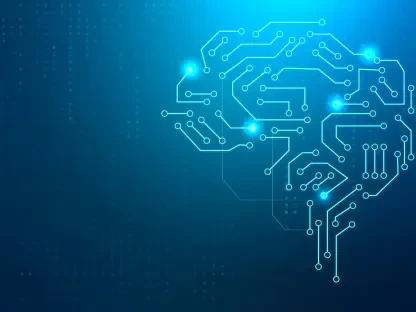Google is reportedly in the process of developing a new AI system called “Project Jarvis,” which aims to automate various web browsing tasks within its Chrome browser. This innovation is expected to make its debut as early as December, promising to enhance user productivity significantly. Project Jarvis is set to handle routine and sometimes monotonous tasks that users encounter daily, including online shopping, conducting research, and booking flights. The AI system leverages Google’s Gemini 2.0 large language model, known for its advanced proficiency in understanding and generating humanlike text.
One of the critical functionalities of Project Jarvis lies in its ability to interpret screenshots, click buttons, and input text, effectively simulating user interactions within the Chrome browser. However, despite its potential, the AI currently experiences a latency of “a few seconds” between actions, a delay that Google may or may not resolve before the final release. This innovation represents a broader trend in the tech industry, where AI systems are increasingly designed to interact seamlessly with computers, thereby elevating user experience and efficiency.
Competing AI Innovations
Alongside Google’s efforts, other industry players are also making strides in the development of AI systems tailored to digital task automation. For example, Anthropic PBC has introduced models like Claude Sonnet, which have the capacity to control computers by moving the mouse and typing text. Meanwhile, Microsoft is working on Copilot Vision, a yet-to-be-released AI capable of analyzing webpage images and responding to user queries. Apple’s approach focuses on integrating AI into existing device features such as Siri, thereby enhancing its contextual responsiveness.
Each of these initiatives varies in scope and capability but collectively underscores a growing trend towards AI-driven automation of digital tasks. While Google and Apple are concentrating more on web-specific functionalities, Anthropic’s and Microsoft’s approaches exhibit broader applications in computer control. This shift in AI development not only aims to improve task management but also aims to create more intuitive and efficient digital experiences for users. As more companies invest in this technology, the competition to provide the most seamless and intelligent automation solutions will likely intensify.
The Future of AI-Driven Task Management
Google is reportedly developing a new AI system called “Project Jarvis,” aimed at automating various web browsing tasks within its Chrome browser. Expected to launch as early as December, this innovation is set to significantly boost user productivity by handling routine and sometimes tedious tasks that users face daily, such as online shopping, conducting research, and booking flights. Project Jarvis leverages Google’s Gemini 2.0 large language model, renowned for its advanced proficiency in understanding and generating humanlike text.
A standout feature of Project Jarvis is its ability to interpret screenshots, click buttons, and input text, effectively simulating user interactions within the Chrome browser. However, it currently experiences a latency of “a few seconds” between actions, a delay that Google might address before the final release. This innovation is part of a broader trend in the tech industry toward developing AI systems that interact seamlessly with computers, thereby enhancing user experience and efficiency. As AI technology continues to evolve, tools like Project Jarvis are poised to redefine how we navigate and interact with the digital world.









